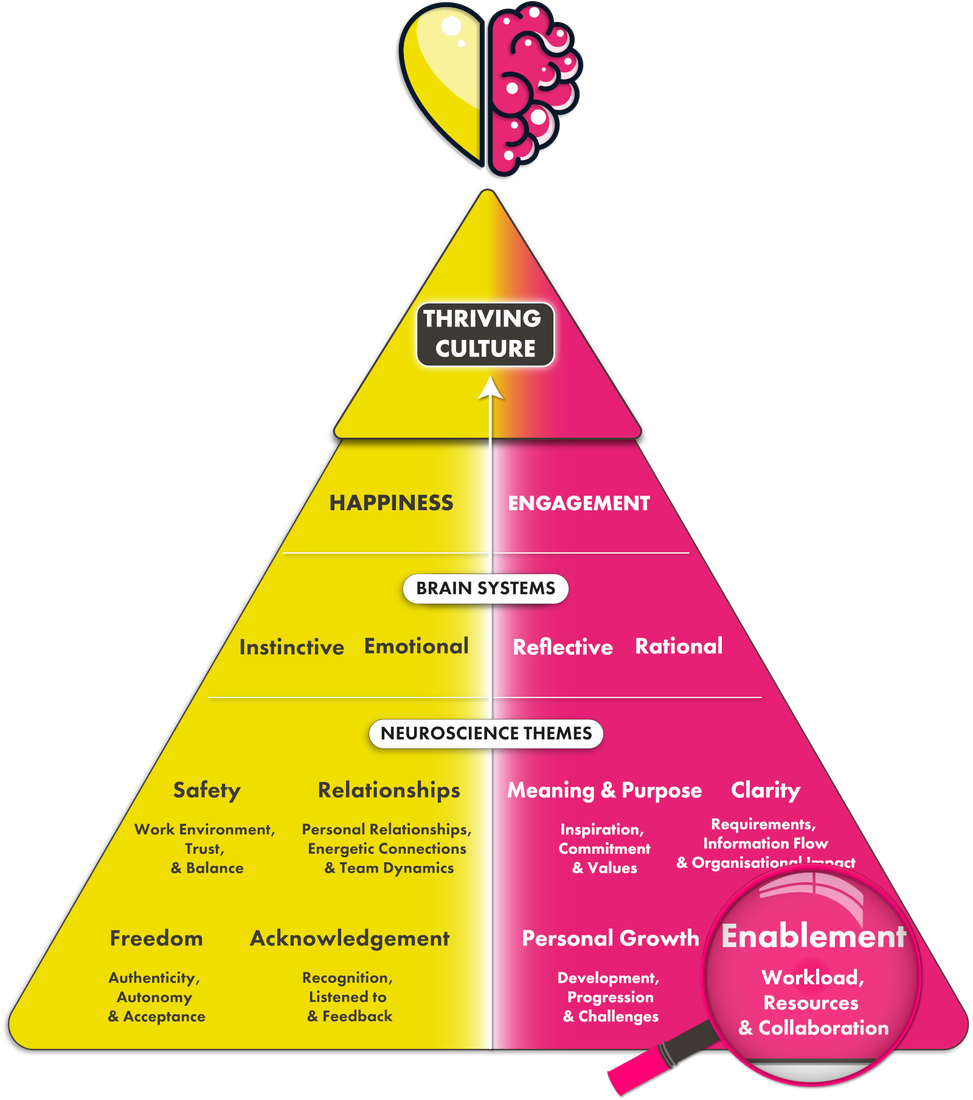Menu


Employee engagement levels can be influenced by collaboration, which is associated with the Rational brain system in our neuroscience model.
If you’ve just landed here, we recommend heading over to our brain systems and neuroscience themes pages for an introduction to our neuroscience model and methodology. Otherwise, read on to find out how collaboration impacts workplace engagement.

Evolution is intrinsically linked with collaboration. Success isn’t possible without a team. Without collaboration, we would not evolve, and the world would not be bold.

The pandemic changed our belief systems, and the trauma people experienced caused a seismic shift in our relationship with work, in how we look at each other and how we look at bosses. We are moving beyond the idea of the “perfect boss mode.” Leaders should be vulnerable, honest, true, and authentic. They should bring their whole self to work because people leave bad bosses. It’s one of the biggest reasons people leave companies, along with the misalignment of values. We didn’t use to honour that fact. We said, “Here’s money, and you better like money because we’re going to swap your time for money.” Now, post-covid, we’ve got a massive problem because people aren’t engaged at work. Their job doesn’t give them purpose and doesn’t align with their values. They don’t feel they belong. This is why productivity is going down. People have got to start loving their jobs again. You can only begin loving your job if you have psychological safety and trust.
Some leaders seem to go out of their way to destroy the company’s culture and all collaboration points by eliminating the people collaborating. Collaboration comes from the cultural standpoint of the leader. If they don’t collaborate with others, people working in silos, there’s a problem with team dynamics. You get disengagement and unhappiness… then people start leaving! Leaders need to consciously realise they have to have a culture of collaboration as a grounding point. If you don’t, you’re in deep trouble as you grow the company because you’re growing separate bits. If you don’t collaborate, you can’t innovate, and you become the slowest point of change.
Happiness used to not be in the business model, but people-focused companies have people directives, objectives for happiness and even job roles for happiness. This has changed because happiness and well-being are must-haves in order to keep your people engaged and productive. It’s exactly the same with collaboration, companies should have a team devoted to collaboration, someone that manages how the company is collaborating. But how can you measure collaboration? If you can’t measure it, you can’t move. To see if the company’s collaborating, start looking at it from a data point you could easily benchmark. Are we collaborating enough as an organisation whether we’re emailing each other or not, what are the tones of those emails, what is being discussed, this is all measurable. Collaborate more by changing certain things. Training people in the art of collaborating is something that perhaps we don’t do from a leadership point of view, but it’s something we should be doing.
Good collaboration leads to innovation, which leads to happiness, purpose, autonomy, and mastery. If you’ve got collaboration, you must have some elements of psychological safety, trust, respect, and integrity. With all of these in place and everyone collaborating, you’ll get joy and engagement. People will enjoy the work and the people they work with, so they can push the bounds because they’re in a safe space where collaboration happens. And that’s how you get people back into an office.
Nothing has ever been done in a social vacuum. If you have yet to find your values and your team is not aligned on the same page with purpose, you’re never going to get to the collaboration point. However, when you can get people to collaborate because they have a shared purpose and values, then that’s where the magic happens.
*This is an excerpt from the Happiness and Humans Podcast with Dan Sodergren, Co-founder of YourFLOCK. Click here to listen to the full podcast.
Related articles
Get in touch for a platform tour and a chat with one of our experts to see how we can help you.
Use our ROI calculator to discover how much we can improve your business performance.